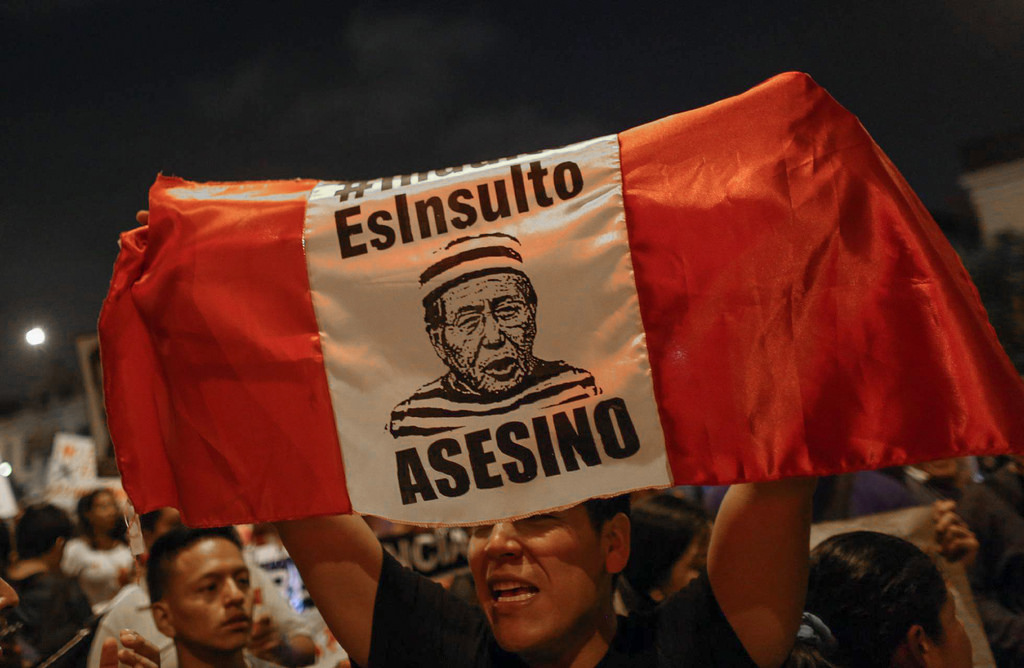Organizations ask the UN for intervention to protect the páramo of Santurbán, threatened by mining projects
Civil society organizations sent a letter to Léo Heller, United Nations Special Rapporteur on the rights of drinking water and sanitation in Colombia. They warn the Rapporteur that these fundamental rights are threatened by the plans of executing harmful mining projects in or near the Santurban páramo. Several mining companies have tried for more than 15 years to extract gold from the páramo, a fragile and strategic ecosystem that provides water to millions of people in Colombia. They request the Rapporteur to prepare a specific report on the case, to visit the site, and to raise his voice to urge the Colombian State to protect the ecosystem and to comply with its international obligations in relation to the right to water.
Source: AIDA AMERICAS ‘Organizaciones piden a la ONU intervenir en la protección del páramo de Santurbán, en riesgo por minería’ .
ANLA denies appeal environmental license filed by oil multinationals
The environmental licensing authority (ANLA) denied the appeal for reinstatement filed by the companies Conocophillips and Canacol Energy after the environmental license for the fracking pilot projects in the Central Magdalena valley had been rejected in November last year. ANLA argued that the provided information is insufficient to carry out an adequate evaluation which ensures the protection of the environment. The Alliance of Colombia Free of Fracking celebrates this decision as it incorporates precautionary principles and recognizes the requests of grass roots organizations in San Martín, Cesar, which have warned for the possible environmental damage that these projects might bring.
Source: ENLACETELIVISION: ‘ANLA niega pilotos de fracking en el Magdalena Medio’.
Anglogold Ashanti drop plans for several mines in Colombia and Argentina to focus on the mines in Quebradona and Gramalote
The South African mining company AngloGold Ashanti (AGA) announced in February that they would sell their share (95%) of the Cerro Vanguardia gold and silver mine in Argentina. They will do the same with one of their branches in Colombia: the Northern Colombia Holdings Limited. AGA says they will receive approximately 4.6 million USD and several additional payments for the sale of the parcels (= gold mining concessions -36,000 hectares- and rights to obtain mining concessions -215,000 hectares) to Royal Road Minerals Limited.
In Argentina, AngloGold already abandoned the Cerro Vanguardia mine in the Santa Cruz province. They left a sore heritage, testifies the Environmental Citizen Assembly (AAC) of Río Gallegos: “The legislation allowed mining companies to leave the ‘open pits’ and their respective dumps uncovered, in state of exploitation, leaving a poor soil with an unknown volume of contaminated aquifer. Social and environmental costs end up way higher than the benefits this mine brought to the region. Neither the social aspect, nor the employees, have ever been a priority. All of a sudden, they have left the aprox. 1,000 workers without an income. In Santa Cruz, AGA never allowed a sustainable development that benefits the population. There have only
been scarce investments compared with the high profitability that the exploited resources provided them.”
Dushnisky, CEO of AngloGold Ashanti, says they have other opportunities which they prefer to invest in. AGA thus shifted its focus to two key projects in Colombia: the Quebradona copper mine in Jericó and the Gramalote gold mine in San Roque, both villages in the department of Antioquia. Felipe Márquez, country CEO of AGA, explains: “The investments of the mining company for 2019 in Gramalote would be about 10 million US$. In Quebradona close to 55 million US$. In Gramalote we have completed the exploration stage and all the technical activities required to advance to the construction and assembly phases. In Quebradona we are finalizing the technical studies of the exploration stage, so our idea is to present the Environmental Impact Study (EIA) with the idea of moving to the construction and assembly phase in 2020. The Plan of Production and performance would allow us to start extracting copper between 2022 and 2024.” (This announcement comes weeks after the mining company was authorized by the Court of Antioquia to carry out activities in the municipality of Jericó Antioquia). The court cancelled the preventive measures that had been introduced by José Andrés Pérez, mayor of Jericó, which restrained the company from continuing any mining activity in the municipality in order to protect the ecological and cultural heritage. (cf. 7. Jericó is awaiting a definite green light to be able to stop mining in their municipality)
Sources: ‘PORTFOLIO ‘AngloGold continúa estudio de factibilidad para proyecto en el país’; EL ESPECTADOR ‘Minera Anglogold Ashanti venderá parte de sus proyectos’; LAREPUBLICA ‘AngloGold empezará a extraer cobre en 2022’; OPI SANTA CRUZ ‘ AngloGold Ashanti abandonó el yacimiento Cerro Vanguardia’; VALORA ‘Minera Anglogold Ashanti vende parte de su cartera en Colombia.
The University of Antioquia reinstates the earlier suspended course financed by AngloGold Ashanti
The University of Antioquia reinstated a course funded by the mining multinational AngloGold Ashanti in Jericó despite the fact that the educational institution had committed to suspend the program. The community of Jericó expressed their opposition to the course because, according to them, it would be part of an advertising campaign in favor of the development of ‘La Quebradona’, a metal mining project in the municipality. The course aims to train social leaders in issues of development, self-management and sustainability. The environmental comité of Jericó hopes the University will suspend the course once more. “We hope that the rectory understands that we don’t want this course here in Jericó, that we reject the
activities of the mining company and that we demand that the public university fulfills a social role, taking the side of the communities and helping them to protect the environment, ” explains José Fernando Jaramillo, member of the comité. As a response to the criticism, the University argues that the agreement guarantees that they will preserve their autonomy in the elaboration of the content. However, Jaramillo indicates that with this initiative, AngloGold Ashanti is really looking to (green)wash its image in front of the communities.
Source: CONTAGIORADIO: ‘Anglogold Ashanti pretende lavar imagen de diplomado U de Antioquia’.
Indigenous communities of Sierra Nevada declare Environmental Emergency in the region
Since the end of February, the Sierra Nevada, a mountainous region at the Caribbean coastline, has suffered from 10 destructive forest fires. The flames destroyed about 1,000 hectares of the ecosystem. Besides the natural damage, houses, farms, sacred sites, health centers and schools of the indigenous settlements have been destroyed. Due to the long summer, the heat waves and strong winds, the Indigenous communities fear for the safety of other areas of their cultural and natural patrimony. The current situation threatens the balance and harmony of the land as a source of life, as well as cultural heritages of its inhabitants. Therefore the authorities of the pueblo de la Sierra Nevada of Santa Marta declared an environmental and economic emergency in the area and urged the national and regional authorities to intervene immediately and to take the necessary measures of prevention and control.
Sources: JUSTICIA AMBIENTAL COLOMBIA: ‘Los cuatro pueblos indígenas de la Sierra Nevada se pronuncian frente a la crisis ambiental en el corazón del mundo.’
Jericó awaits definite green light to stop mining in its municipality
Seven kilometers southeast from the village center of Jericó, you’ll find the Quebradona mining project, owned by South African multinational AngloGold Ashanti. Jericó, a small municipality in Antioquia with around 12 thousand inhabitants, finds its prosperity mostly in agriculture. It therefore comes as no surprise that the local farmer communities did not welcome the mining company with open arms. For the past two years farmer organizations mobilized and campaigned massively against metal mining in their municipality. They argue that this would not only affect their natural resources but also the social frames in the town. They fear that problems such as poverty, crime, social degradation and environmental damage might come along with it.
Fortunately, the people of Jericó have a town council who has their back. Mayor Jorge Pérez Hernández argued that the mine would have devastating effects as 100% of the water sources of Jericó come from the area where the mine would be. In 2017, a first attempt to prohibit mining through a municipal agreement was rejected by the administrative tribunal of Antioquia, arguing that the City Council was not the competent authority to prohibit mining in the municipality. The agreement was based upon section 9 of article 313 of the Constitution, which states the right of municipality councils to take measures for “laying down the necessary norms in order to secure the control, preservation and defense of the ecological and cultural patrimony of the municipality”.
One of the arguments in favour of the mining operations is that the “subsoil belongs to the nation”, and therefore the national government is the only authority who is able to decide on mining matters. However, a study of articles 332 and 334 of the Constitution and Law 685 of 2001 (Code of Mines) states that “the Constitution did not attribute the ownership of the subsoil to the Nation but to the State”, which means that the ownership of the subsoil belongs to all state’s authorities: local, regional and national.
A second municipal agreement, enforced by the mayor at the end of 2018, has not yet been invalidated – nor approved – by the Administrative Tribunal of Antioquia. Meanwhile the work of the company is (supposed to be) suspended. Fernando Jaramillo, leader of the environmental table of Jericó, says it is quite difficult for the Tribunal to make a decision since the State Council approved a similar municipal agreement in the municipality of Urrao, also in southwest of Antioquia, where mining activities are prohibited as to the protect ecological heritage.
The contradictory decision-making between the State Council and the Consitutional Court does not simplify the struggle for municipalities. While the first one protects the competence of territorial entities to prohibit mining in their territories and the validity of popular consultations as a mechanism for citizen participation, the Constitutional Court reinforced the idea that the capacity of municipal consultations is limited, especially when talking about subsoil and exploitation of non-renewable natural resources, whose ownership is national. Jaramillo adds that, in the end, the worst damage that the company has generated so far is a division of the population which turned out in a conflict between those who support the company and those who oppose their activities.
Source: SEMANARURAL: ‘Jericó espera una luz verde definitiva que detenga la minería’.
Communities stand up against the construction of dams in Quindío and Antioquia
In Pijao, Quindío, a farmer community sound the alarm bell after researchers entered unannounced their territory to take measurements of a small stream. They said they were taking measures for the construction of a small hydroelectric dam and explained that the area is supposedly “property of the municipality of Pijao”. The mayor clarified that the dam already existed since 1930, and it managed to generate energy for the municipality, explaining that a mud stream had erased the former dam.
Deputy Jorge Hernán Gutiérrez from the Liberal party proposed a debate where the local, departmental and environmental authorities are to report and to be alert of what the national government intends to do in the territory. “And while it is true
that there are rulings of national order that could force the installation of the dam, there are also constitutional rules that protect our rights and compensations for the environmental damage that our territory might suffer.” In the East of Antioquia, various protest marches against the construction of dams took place on March 14th, International action day against hydroelectric dams. “In several municipalities of the department, like Cocorná, with three medium-sized hydroelectric plants, peasant activities and water springs suffer a lot because of the artificial regulation of the natural river streams”, according to Carlos Olaya, environmental defender.
Sources: CRONINCA DEL QUINDIO: ‘Hidroeléctrica en Pijao no es nueva, existía desde 1930’; MI ORIENTE: ‘Municipios del Oriente dijeron “no más hidroeléctricas”.’
Gachantiva prohibits mining
Gachantiva (a small town in the Boyacá province) succeeds in the prohibition of mining through a municipal agreement. The government tried to avoid for 5 years that the inhabitants would organize a Consulta Popular. The mine would pose at risk the environmental resources and the water provision of the region.
Source: RCN RADIO: ‘Concejo de Gachantiva Boyaca aporobó proyecto que prohibe la minería.’
12th march ‘Por la vida y el agua” en Cauca
At the beginning of March, the 12th march ‘por la vida y el agua’ took place in the region of Cauca. The 350 protesters aimed to reject mining in the region and the damage it causes to the environment, the fauna and the water provision. They furthermore complained about the lack of state provisions to face the rural challenges in the region. They told the multinationals Carboandes and Miranda Gold that they have a month to leave the Macizo Mountain range.
Source: NOTIVISION: ‘Se realizó la XII Marcha por la Vida y Por el Agua en Cauca’.
Court rules that Colombian Government has to find a substitute for asbestos
A ruling of the 39th Administrative Court of Bogotá ordered the Government to replace this mineral with less harmful substances, within a period of five years. According to the information provided by the legislator’s office, between 2010 and
2014 the National Institute of Cancerology recorded 1,744 deaths from lung cancer caused by asbestos, and in the last five years the battle against the disease caused the loss of another 285 Colombians affected by mesothelioma. The use of asbestos has been banned in more than 50 countries around the world, including the European Union. The material that is used to make tiles, pipes, ash pads for cars and even uniforms entails enormous health risks, according to the World Health Organization. The judgement is supported by most of the political authorities concerned with the problem. Although in some parts of the country the reactions are less enthusiastic. In Campamento, a small municipality in the north of Antioquia, people still rely on the active asbestos mine which provides the majority of the jobs. Most of its citizens are convinced that the material did not cause any health problems in the town during the past decades. The governor of Antioquia announced that a social plan would be set up in order to prevent the negative effects of the loss of this mine which functions as a source of income for the town.
Sources: EL TIEMPO ‘Campamento, el pueblo que se niega a renunciar al asbesto’; EL NUEVO SIGLO ‘Greenpeace insiste en que Congreso prohíba el asbesto’.
27 Congress members ask President Duque to prohibit fracking in Colombia
A group of 27 congress members, most of them belonging to the Green Alliance, sent a letter to President Iván Duque asking to ban the use of fracking for oil exploration. They confronted him with the promises he made during his presidential campaign. “One of your commitments was that there would be no more fracking in Colombia, a decision that you expressed in academic and community centers and in the press, and which you justified by ensuring that the risks of developing these activities were very high in social, geological and environmental matters”, states the letter.
The congressmen condemn the intentions in the recently published National Development Plan which aims for an expansion of the oil and mining industry and the dependence on the fossil fuel industry. They encourage the President to prohibit fracking since it “is a responsible decision”, and they ask him to “honor his word and be in harmony with the concerns of Colombians, especially those who would be directly affected by the possible consequences of this type of projects.”
Ecopetrol, one of the countries largest oil companies, revealed in February their new market strategies for the period 2019 – 2021, where fracking is an option to strengthen their reserves.
Source: RCN RADIO ‘Nuevo llamado de congresistas a Duque para prohibir el fracking’.
Minga indígena: indigenous communities block the Panamericana and demand visit of President Duque to obtain guarantees for their rights
Indigenous people in southwestern Colombia have mobilized protests across highways to demand a meeting with President Iván Duque over his government’s failure to implement agreements and respect indigenous land rights.
Indigenous groups in southwestern Colombia have since March 10th mobilized mass protests, known as minga, to demand a meeting with President Iván Duque over his government’s failure to implement agreements made during the previous administration’s historic 2016 peace agreement and recognize community land rights. Protest leaders estimate there were 20,000 people involved in the massive mobilization as of March 27th, including Afro-Colombian and indigenous communities, students, and associations of peasant farmers, or campesinos. The Indigenous Regional Council of Cauca (CRIC) has denounced the crackdown against the minga by the police’s anti-riot squad, known as ESMAD. “This is an attack against the entire dialogue process that has existed up until today within the minga. It is an attack against the security and the life of every person at the camp and surrounding area,” CRIC said. Nelson Lemus, a CRIC council member, told Mongabay that the
protesters wanted Duque to meet with the indigenous organization in Colombia’s department of Cauca —something he has failed to do since taking office in 2018, CRIC said in a press release. “We demand that the government respects the rights of
indigenous and Afro-descendent minorities to conserve our territory, protect our water and strengthen our indigenous economies,” Lemus said. “Our first political objective is that the president comes to indigenous territory to hold a face-to-face meeting with us.”
The protesters have blocked the PanAmerican Highway connecting Colombia to Ecuador, and Duque has refused to travel to Cauca to meet with indigenous organizations unless the roadblock is lifted.“We should be able to come to an understanding through a legal framework,” Duque said in a public address to the country on March 28th. CRIC criticized the president’s declaration, saying his portrayal of the minga as illegal undermines their right to protest and raises fears of violence at the hands of government and right-wing paramilitary groups.
Colombia’s ombudsman, Carlos Alfonso Negrete, called on the president to sit with the indigenous protesters to end the roadblocks, which are seen as having a negative impact on the nation’s economy. The transportation of basic food supplies
and gasoline has been impacteding southern parts of the country, and the Colombian Red Cross has activated a humanitarian caravan to provide medical supplies and assistance to affected communities in the Cauca.
The demands of the ethnic minorities participating are: the inclusion of ethnic communities in the government’s recently announced National Development Plan; the protection of community leaders from targeted killings; and the guarantee of prior consultation (consulta previa) for extractive or agro-industrial projects that affect indigenous territory. They also demand their full appropriation of 400 square kilometers (154 square miles) of land that was promised to indigenous people in the Cauca by the former president, Juan Manuel Santos; since only 14 square kilometers (5.4 square miles) have been delivered to date. CRIC says the land would have to be divided between 126 reservations in the department.
CRIC also declared its opposition to oil exploration in the form or fracking, that has begun at three pilot locations in the Magdalena River valley. Five companies, including ExxonMobil, ConocoPhillips and state-owned Ecopetrol, are seeking to operate six proposed fracking blocs. “We don’t agree with fracking practices,” Lemus said. “This government has approved fracking, the destruction of the Amazon and other environmental crimes that only serve to increase the wealth of a corrupt minority and multinational corporations. Our territories are systematically violated by this government beholden to a capitalistic death project.”
On March 22th, an explosion in remote indigenous territory in Valle del Cauca department killed nine indigenous protesters. Before launching an investigation, the government claimed the deaths were caused by an accident. Minister of Defense Guillermo Botero told El Tiempo the explosive devices were brought into the territory by an indigenous protester, presumably to generate an attack. “That is the most probable hypothesis considering that they are near the Buga Buenaventura highway.” The National Indigenous Organization of Colombia (ONIC for its Spanish acronym) rejected the notion that indigenous people were responsible for the explosion, calling the incident a paramilitary-led massacre. “The indigenous people are people of peace, not terrorists,” ONIC said in a public statement.
Sources: MONGABAY: ‘Indigenous leaders decry Colombia’s deadly crackdown on land protesters’.
World Water Day
On the 22th of March, World Water Day was celebrated. In various parts of Colombia, people took the streets to demand attention for the irresponsible use of water resources. In Bucaramanga citizens spoke up for the protection of the Santurban páramo, a fragile and strategic ecosystem that provides water to millions of people in and around the city and is currently threatened by mining. A similar protest occurred in the nearby city of Barrancabermeja, where people also criticized the poor water management and the way authorities are willing to privatize water resources.
In Medellín, the environmental association ‘Rios Vivos’ organised an encuentro por la liberacíon del Río Cauca. With music, sing-alongs for the water, speeches and debates, they aimed to claim justice for the environmental disaster that was caused to the second biggest river of Colombia by the Hidroituango dam, which cut the river’s current for almost three days in February.
(cf. M&T February).
Meanwhile mining companies such as Minesa seek to take advantage of this symbolic day by publishing publicity videos which aim to show a company concerned with water conservation and supply. In a press interview, the president of the company, Santiago Ángel, condemns the “stigmatization” of mining always being bad for a clean water supply. He argues that his company is aware of the importance of water in the mining territories and that they so far completed over 60 thousand hours of technical studies to ensure the protection of water resources. In their publicity companies, sentences created by grassroots
organisations such as ‘el Agua es Vida’, Water is Life, are used.
On the World Water Day Yes to Life No to Mining and partners launched their online ‘water is life – toolkit’. The site YLNM designed is a summary of the circuit in which water circulates within the ecosystem, the importance of water for human and other life on the planet and the threats to water resources by mining and oil activities. Furthermore, the platform offers a toolkit with basic principles that communities can implement to protect their territory from destructive mining.
Sources: TWITTER: ‘Tweet Minesa Colombia 21 March 2019’; TWITTER: ‘Tweet Movimiento Rios Vivos 19th of March 2019”; YLNM: ‘How mining disrupts the water cycle’; VANGUARDIA: ‘Realizan plantón para exigir protección del agua en Santander’; CARACOL: ‘Trabajadores de Minesa consumirán agua que usen’.













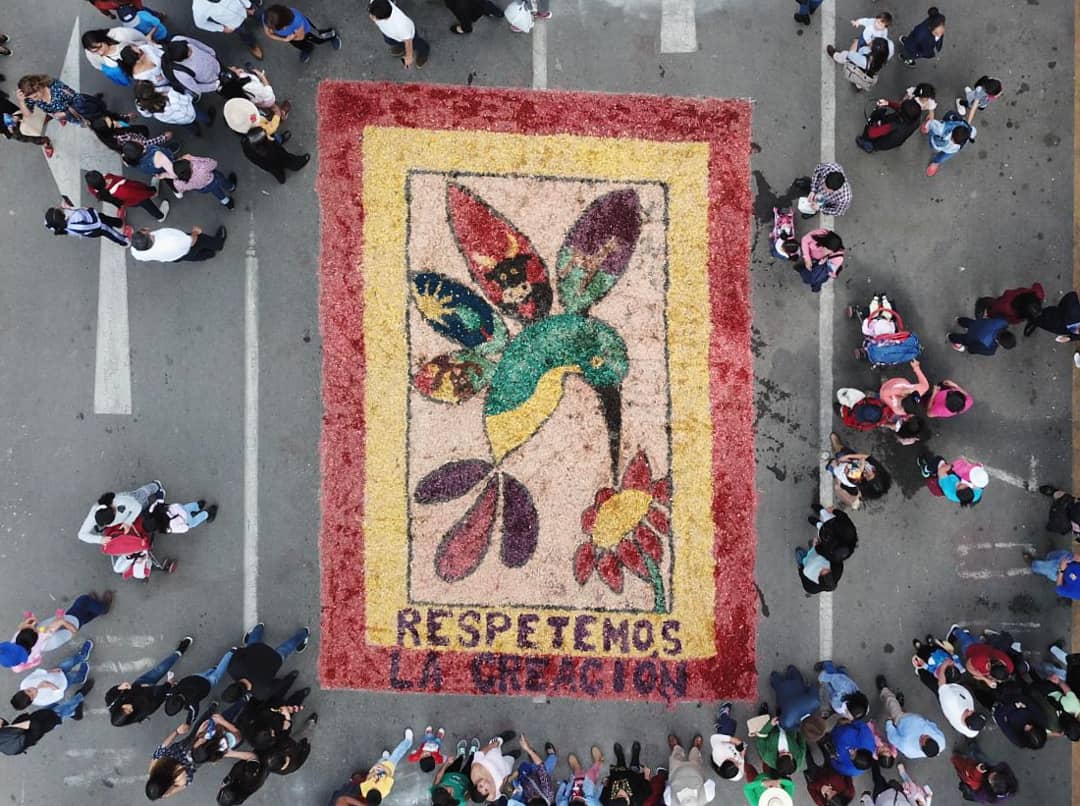
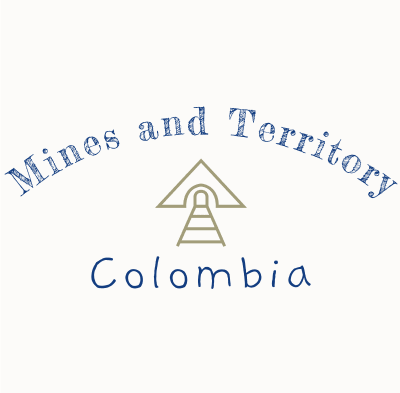
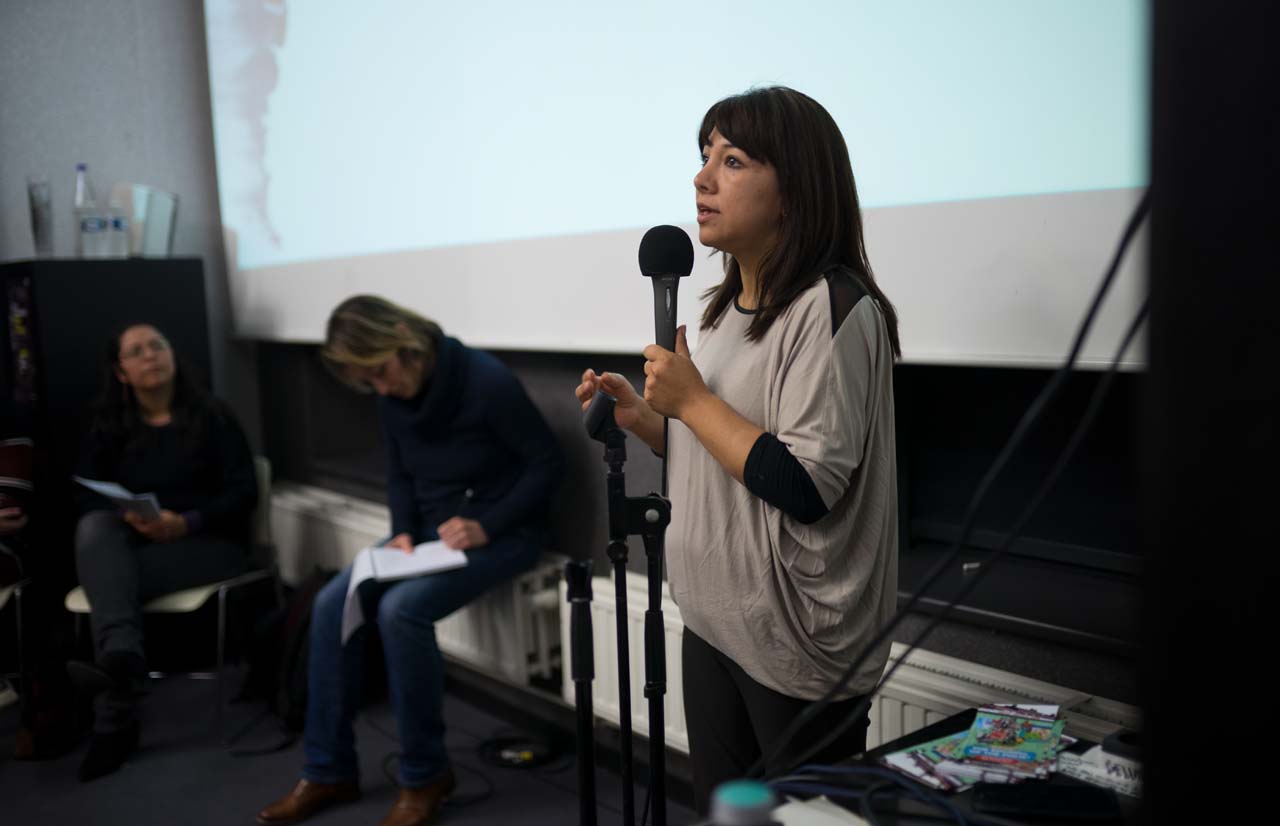


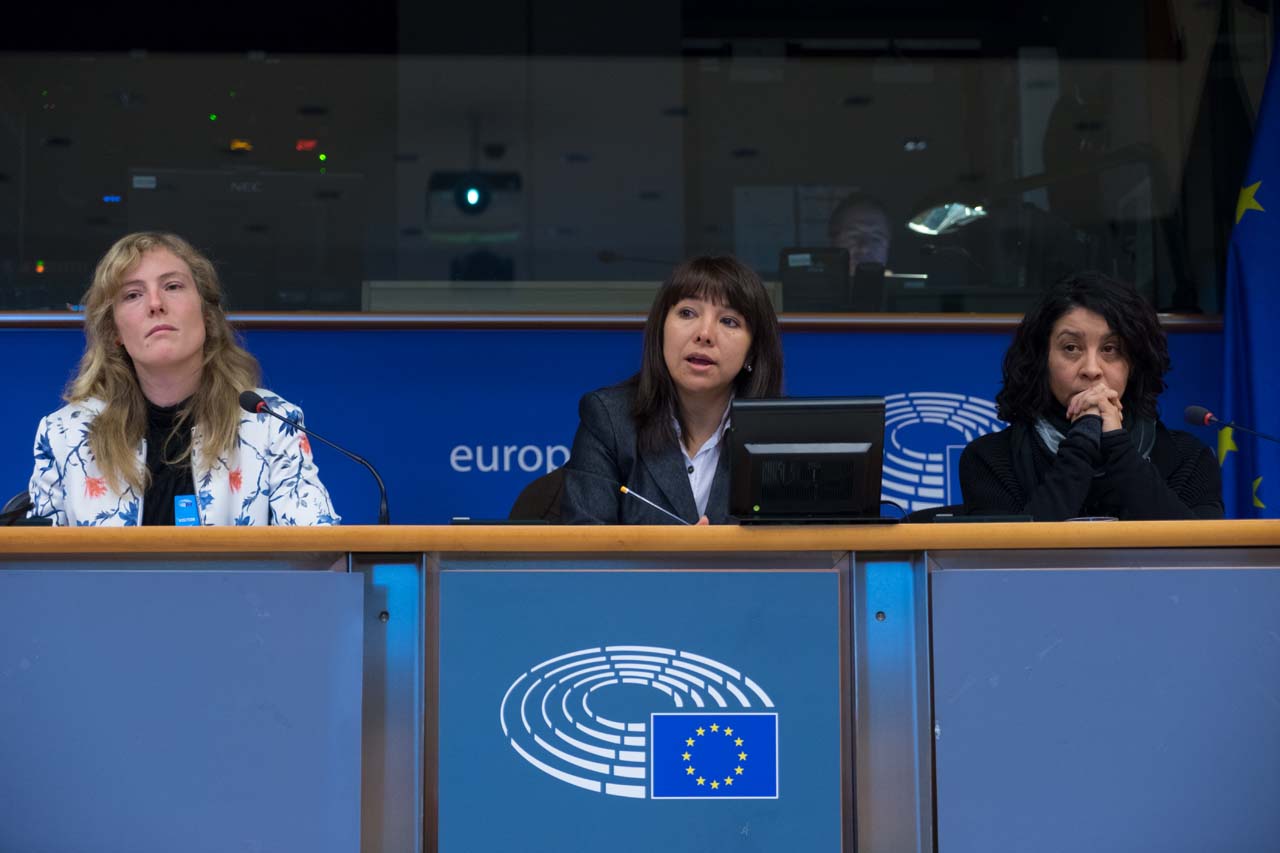
 25 January 2018
25 January 2018